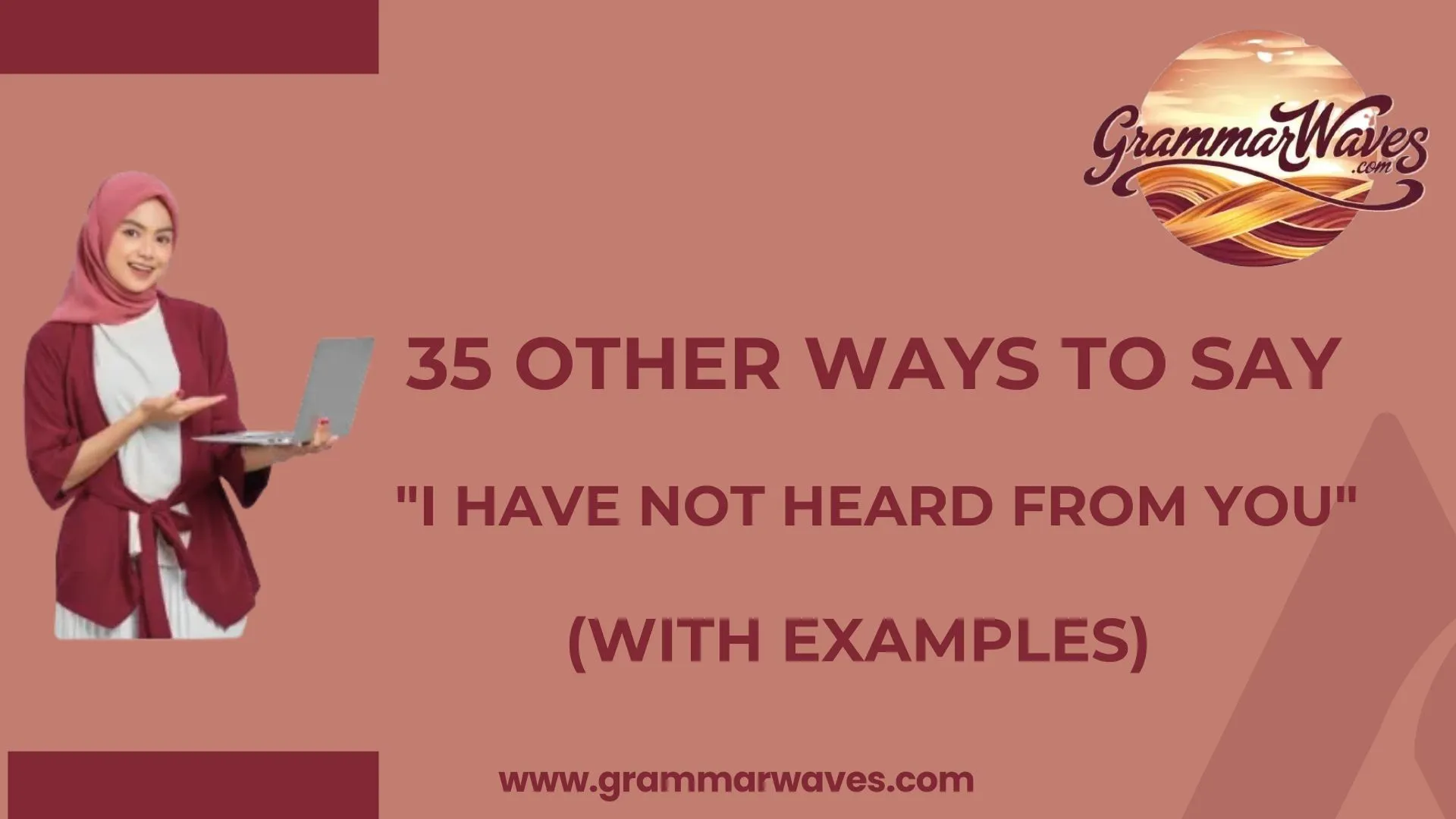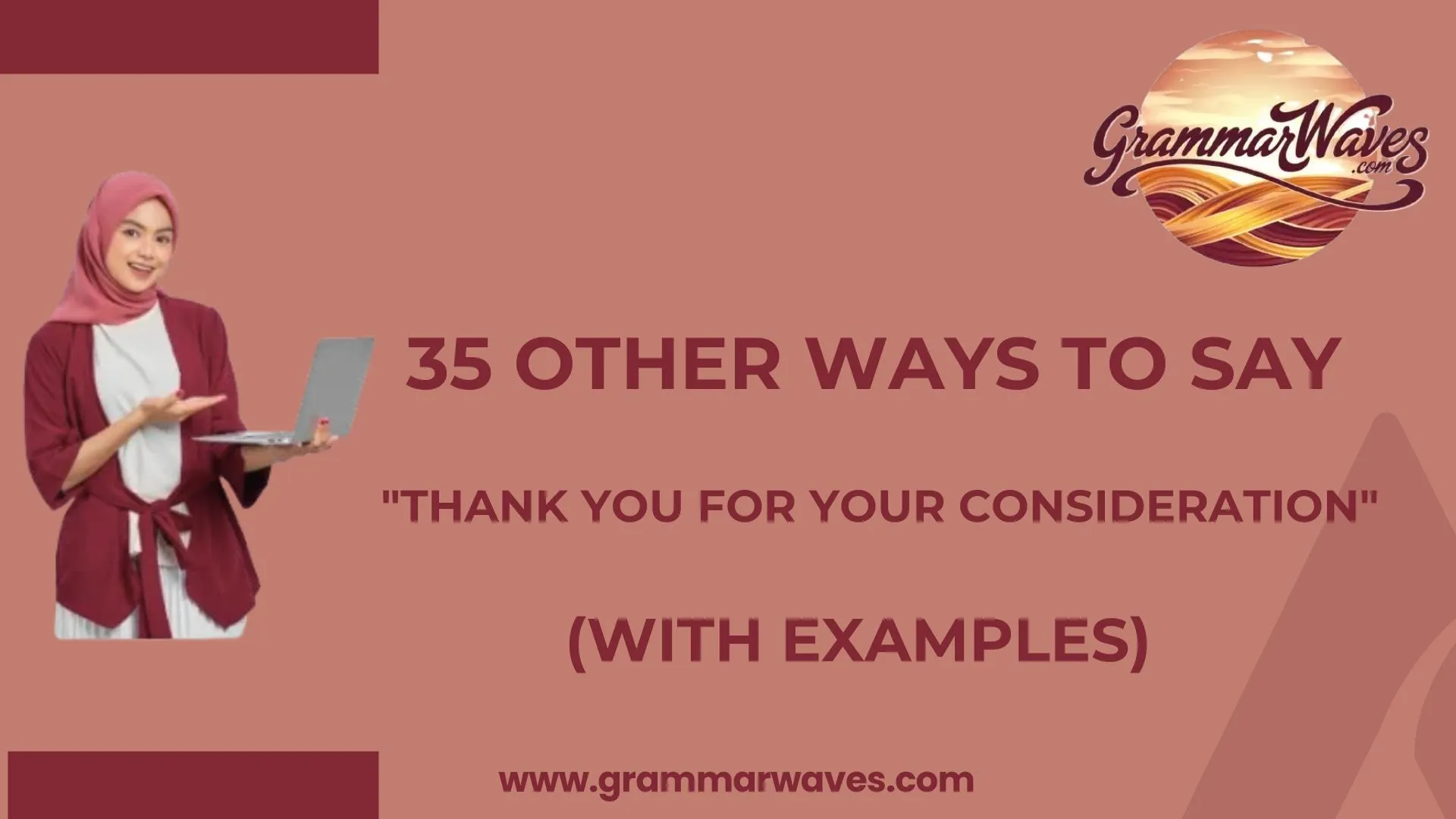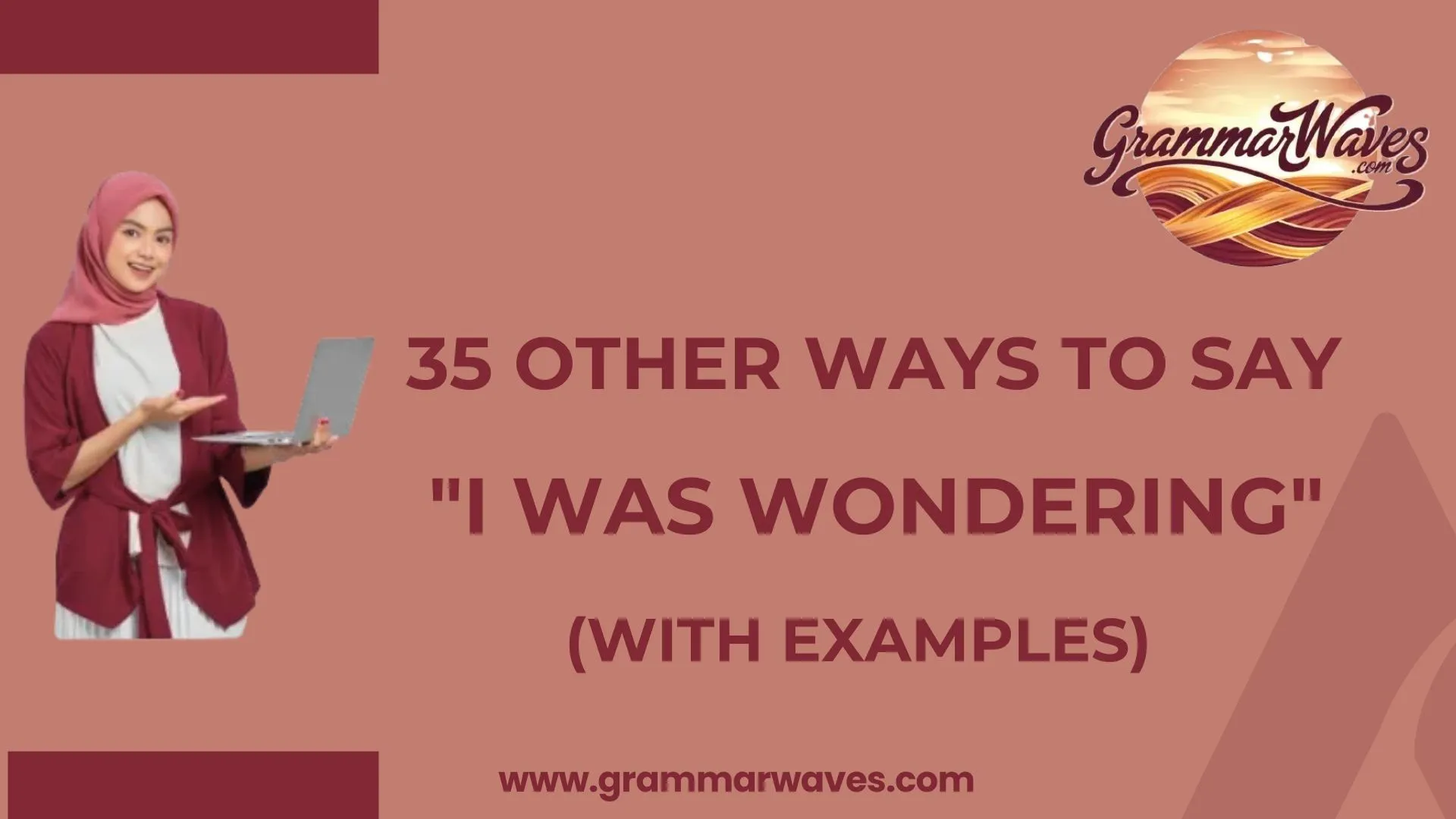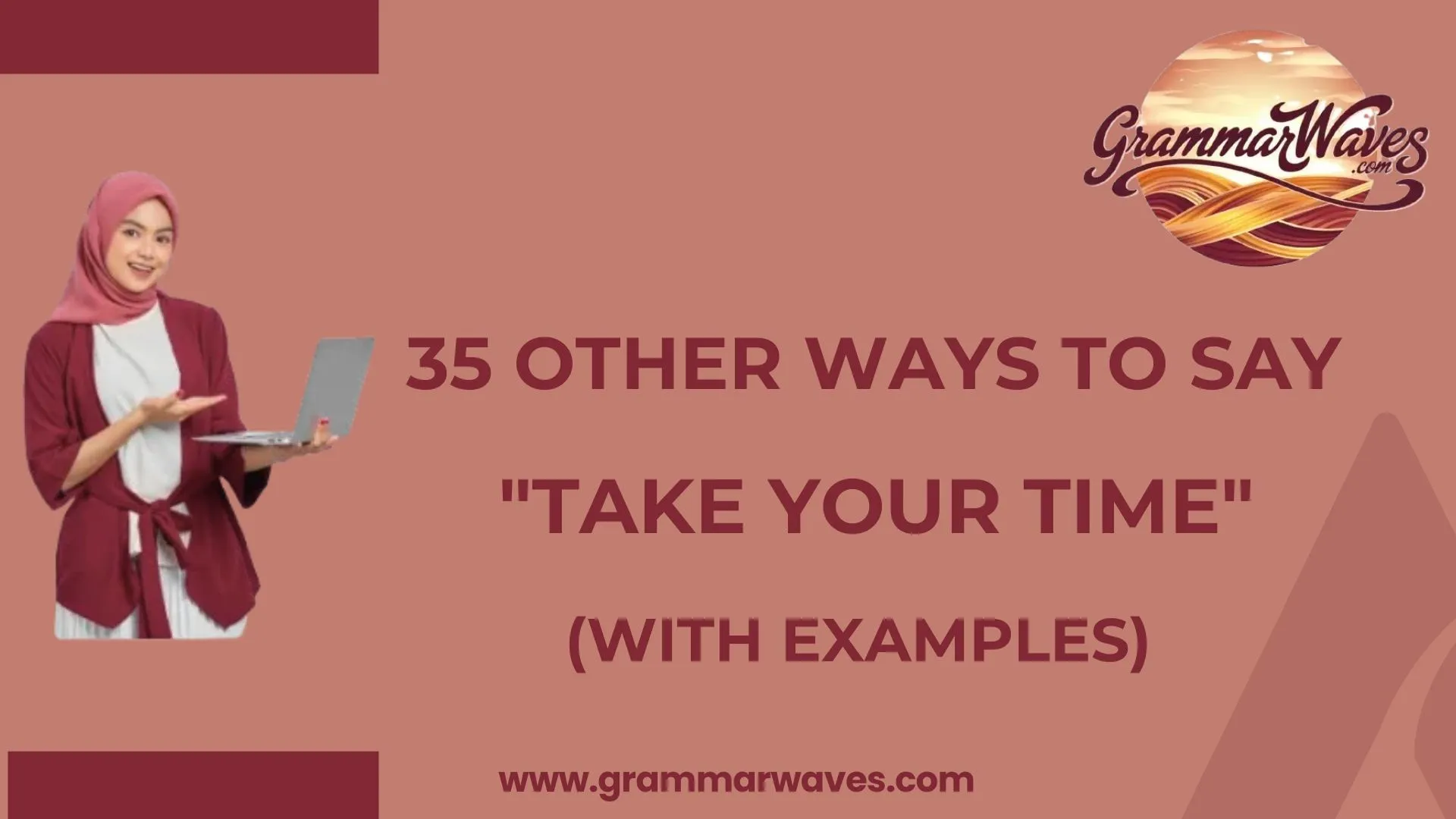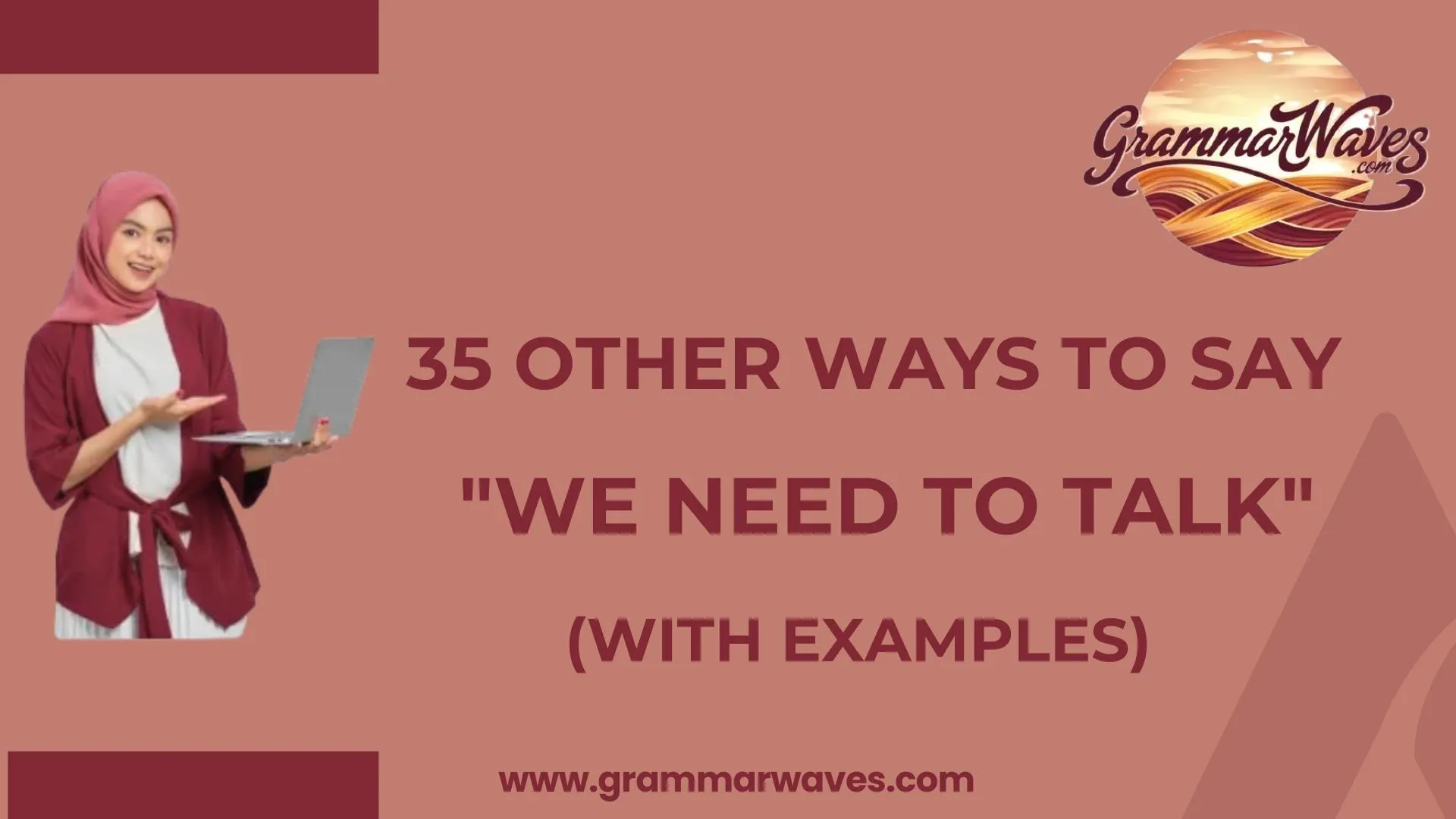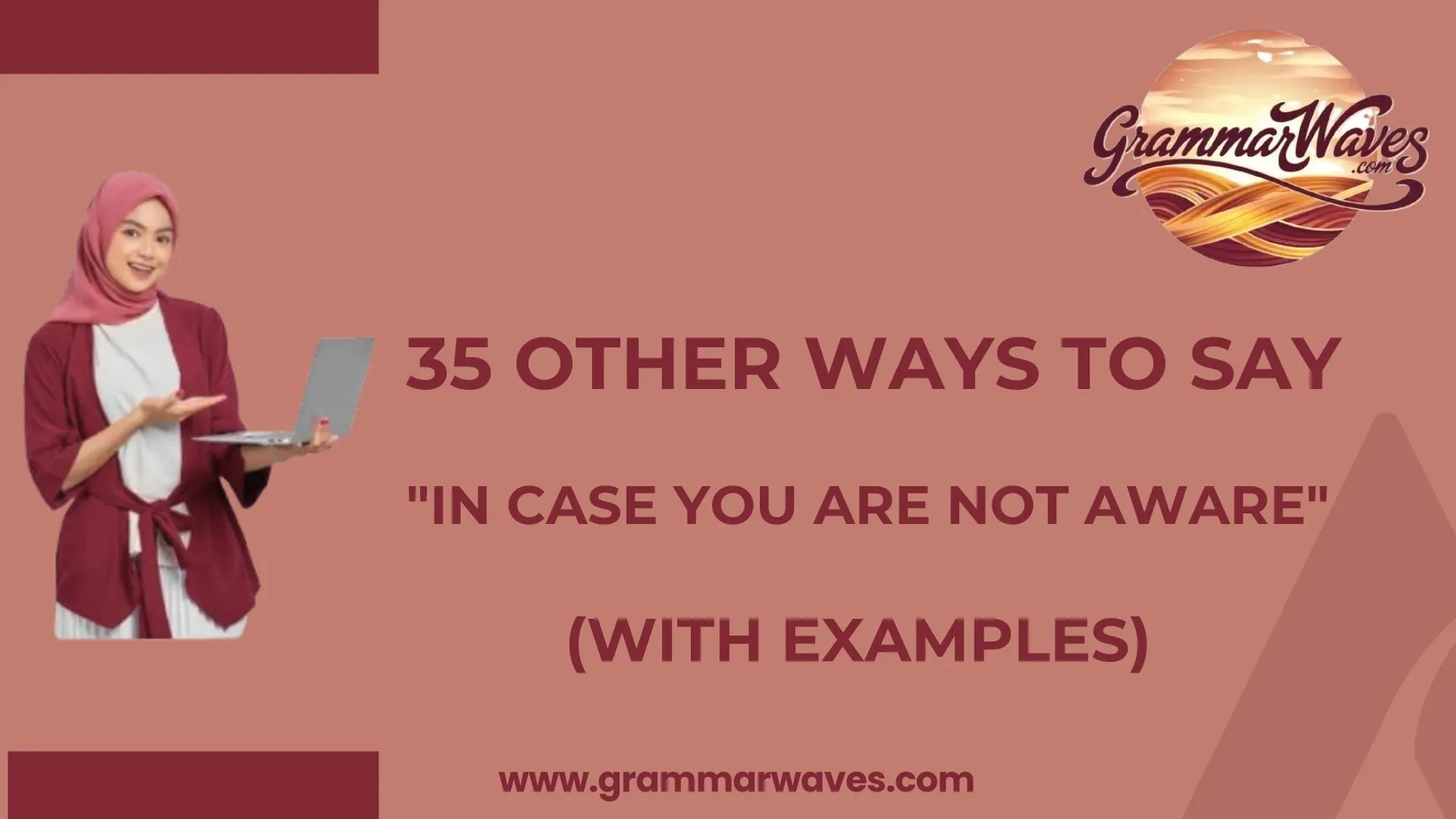In real-life communication, pauses can feel tricky, and when you follow up, you risk sounding impatient, pushy, or dismissive. The phrase “I Have Not Heard From You” is common, but its formal and sometimes cold tone can create distance. Over time, I’ve seen how warm, empathetic, and thoughtful alternatives transform a message into something more caring and personal. The words we choose in writing to a friend, colleague, or client are never just filler-they shape how people respond and whether they feel respected.
From my own experience, reframing the words I used made communication smoother. When reaching out to a colleague, a gentler choice led to quicker replies. With a client, switching from a formal to a warm message turned a delay into an open, positive exchange. Even with a friend, skipping the cold approach helped keep things light and respectful. These thoughtful alternatives aren’t just polite-they build trust, prevent misunderstandings, and keep conversations flowing in a way that strengthens every relationship.
What Does “I Have Not Heard From You” Mean?
The phrase “I have not heard from you” simply means you haven’t received a response or communication from someone after reaching out. It acknowledges silence or delay but doesn’t necessarily explain why the person hasn’t replied. It’s neutral, but tone and context can shift how it feels-either polite or slightly pressing.
When to Use “I Have Not Heard From You”
You might use this phrase in situations like:
- Professional follow-ups: Checking in with a client, recruiter, or colleague.
- Personal conversations: Reaching out to a friend or family member who hasn’t responded.
- Reminders: When an update, answer, or confirmation is expected.
It’s useful but should be phrased carefully, since wording can influence how the other person perceives your intention.
Is It Professional/Polite to Say “I Have Not Heard From You”?
Yes, it can be professional, but it often sounds stiff or distant. In workplaces, directness can be fine, but softer alternatives often sound more polite, approachable, and respectful of the other person’s time. In personal situations, a warmer phrasing usually feels more thoughtful.
Pros and Cons
Pros:
- Clear and straightforward.
- Works in professional communication.
- Quickly gets the point across.
Cons:
- Can sound cold or impatient.
- Lacks empathy if the delay is due to personal reasons.
- Risks of creating unnecessary pressure.
I Have Not Heard From You Synonyms:
- Just Checking In
- Wanted to Follow Up
- Have You Had a Chance To…?
- I Hope Everything’s Okay
- I Just Wanted to Touch Base
- Have You Had Time to Consider…?
- I Wanted to See If You Got My Message
- I Was Wondering If You’ve Had a Chance…
- Following Up on My Previous Message
- I Haven’t Heard Back Yet, and Wanted to Check In
- I Wanted to Follow Up on Our Last Conversation
- I Was Hoping for an Update
- Could You Please Let Me Know When You’re Able?
- Just Reaching Out Again
- I Wanted to Make Sure You Saw My Note
- I Understand Things Are Busy, But…
- I Wanted to Check if You Needed Anything Else From Me
- Have You Had a Chance to Review?
- I Wanted to Confirm You Received My Message
- Just Following Up to See Where Things Stand
- I Hope This Finds You Well-Just Wondering About…
- I Wanted to See if You Had Any Updates
- I Understand If Things Are Delayed, But…
- Just Wanted to Circle Back
- I Wanted to Double-Check
- I Was Wondering If You Might Have an Update
- I Wanted to Reach Out Once More
- Just Touching Base Again
- I Hope to Hear From You Soon
- I Just Wanted to See if There’s Any News
- I Was Checking In to See if Everything’s on Track
- Just Wanted to Make Sure I Didn’t Miss Your Reply
- I Wanted to See How Things Are Going
- Have You Had Time to Get Back to Me Yet?
- I Look Forward to Your Reply
Just Checking In
Meaning:
A gentle way to remind someone of your previous message.
Definition:
Implies curiosity, not impatience.
Explanation:
It’s friendly and leaves space for the other person to respond when ready.
Example:
“Hi Alex, just checking in to see if you had a chance to review my proposal.”
Best Use:
Professional follow-ups where you want to stay polite but not pushy.
Worst Use:
When urgency is high-it may sound too casual.
Tone:
Warm, light, non-demanding.
Wanted to Follow Up
Meaning:
A professional way to remind someone you’re awaiting a response.
Definition:
Signals responsibility and clarity.
Explanation:
Shows you’re proactive without sounding impatient.
Example:
“I wanted to follow up on the email I sent last week regarding our meeting.”
Best Use:
Business emails, client communication.
Worst Use:
Casual chats with friends-it feels too formal.
Tone:
Polite, professional, respectful.
Have You Had a Chance To…?
Meaning:
A soft way to ask if someone’s reviewed or addressed your request.
Definition:
Invites a response without pressure.
Explanation:
Shifts focus from their silence to their availability.
Example:
“Have you had a chance to look over the document I sent?”
Best Use:
Work settings, polite reminders.
Worst Use:
Avoid using it when you need an urgent yes/no answer.
Tone:
Considerate, neutral, approachable.
I Hope Everything’s Okay
Meaning:
Expresses care before mentioning the lack of response.
Definition:
Prioritizes concern over urgency.
Explanation:
Works well when silence may signal a personal issue.
Example:
“I hope everything’s okay-I wanted to check if you’ve seen my last message.”
Best Use:
Personal communication or sensitive workplace follow-ups.
Worst Use:
Formal corporate settings where empathy may seem unnecessary.
Tone:
Compassionate, warm, thoughtful.
I Just Wanted to Touch Base
Meaning:
Informal way to reconnect.
Definition:
Suggests checking progress or keeping in contact.
Explanation:
Makes communication feel collaborative.
Example:
“I just wanted to touch base to see if we’re still set for Friday’s call.”
Best Use:
Team collaboration, casual work contexts.
Worst Use:
Strictly formal situations-it may sound too relaxed.
Tone:
Friendly, approachable, conversational.
Have You Had Time to Consider…?
Meaning:
Focuses on whether they’ve thought about your request.
Definition:
Respectful, time-sensitive reminder.
Explanation:
Shows awareness of their busy schedule.
Example:
“Have you had time to consider the proposal I shared last week?”
Best Use:
Professional negotiations, proposals.
Worst Use:
Informal chats-it feels too businesslike.
Tone:
Respectful, professional, considerate.
I Wanted to See If You Got My Message
Meaning:
Clarifies whether your message reached them.
Definition:
Polite way to confirm receipt.
Explanation:
Frame delay as a possible delivery issue.
Example:
“I wanted to see if you got my message about the meeting.”
Best Use:
Email follow-ups, when unsure if your first note was received.
Worst Use:
Overuse may sound repetitive.
Tone:
Neutral, polite, clear.
I Was Wondering If You’ve Had a Chance…
Meaning:
A softer phrasing to reduce pressure.
Definition:
Uses curiosity instead of directness.
Explanation:
Suggests patience while still seeking a response.
Example:
“I was wondering if you’ve had a chance to finalize the budget review?”
Best Use:
Professional and personal conversations.
Worst Use:
Urgent reminders.
Tone:
Curious, kind, thoughtful.
Following Up on My Previous Message
Meaning:
Clear reminder referencing your last outreach.
Definition:
Professional and organized.
Explanation:
Position your note as part of a sequence, not nagging.
Example:
“I’m following up on my previous message regarding the contract.”
Best Use:
Work emails where clarity is essential.
Worst Use:
Informal chats-it feels too stiff.
Tone:
Professional, direct, formal.
I Haven’t Heard Back Yet and Wanted to Check In
Meaning:
A balanced phrasing that’s honest but not harsh.
Definition:
States the fact while showing openness.
Explanation:
Acknowledges silence but softens it with “check in.”
Example:
“I haven’t heard back yet and wanted to check in on next steps.”
Best Use:
Business communication where timelines matter.
Worst Use:
Sensitive personal topics.
Tone:
Direct, balanced, polite.
I Wanted to Follow Up on Our Last Conversation
Meaning:
Refers back to a previous discussion rather than silence.
Definition:
Creates continuity and feels purposeful.
Explanation:
It makes the message feel like part of an ongoing dialogue instead of a demand.
Example:
“I wanted to follow up on our last conversation about the project timeline.”
Best Use:
Business communication, team updates.
Worst Use:
Very casual personal messages-it feels overly formal.
Tone:
Professional, respectful, ongoing.
I Was Hoping for an Update
Meaning:
Shows anticipation while still being polite.
Definition:
Implies you’re waiting, but with patience.
Explanation:
Adds warmth by framing your interest as “hoping.”
Example:
“I was hoping for an update on the shipment schedule.”
Best Use:
Polite client or colleague follow-ups.
Worst Use:
It may sound too passive in urgent matters.
Tone:
Gentle, patient, polite.
Could You Please Let Me Know When You’re Able?
Meaning:
Gives flexibility to the other person’s timing.
Definition:
Prioritizes their schedule.
Explanation:
Sounds considerate and avoids pressure.
Example:
“Could you please let me know when you’re able to share your thoughts?”
Best Use:
Work or personal communication where empathy matters.
Worst Use:
Not ideal if you need a firm deadline.
Tone:
Respectful, kind, flexible.
Just Reaching Out Again
Meaning:
Casual and non-demanding.
Definition:
Keeps tone friendly, not formal.
Explanation:
Signals persistence without harshness.
Example:
“Just reaching out again to see if Friday still works for you.”
Best Use:
Casual emails, friendly follow-ups.
Worst Use:
High-stakes or urgent situations.
Tone:
Light, friendly, approachable.
I Wanted to Make Sure You Saw My Note
Meaning:
Centers on ensuring delivery, not on their silence.
Definition:
Removes blame, shifts to possible oversight.
Explanation:
Helps reduce defensiveness from the recipient.
Example:
“I wanted to make sure you saw my note about the updated schedule.”
Best Use:
When emails risk being overlooked.
Worst Use:
Texts or informal chats-it feels too corporate.
Tone:
Considerate, polite, professional.
I Understand Things Are Busy, But…
Meaning:
Acknowledges their workload before requesting a reply.
Definition:
Shows empathy first.
Explanation:
Balances understanding with a gentle reminder.
Example:
“I understand things are busy, but I wanted to check if you had time to review my email.”
Best Use:
Professional settings where empathy matters.
Worst Use:
It may seem passive if urgency is high.
Tone:
Empathetic, respectful, patient.
I Wanted to Check if You Needed Anything Else From Me
Meaning:
Frames silence as possibly needing more input from you.
Definition:
Puts the responsibility on you, not them.
Explanation:
Makes you look supportive instead of pushy.
Example:
“I wanted to check if you needed anything else from me before making a decision.”
Best Use:
Client, manager, or collaborator communication.
Worst Use:
Doesn’t work if you genuinely need their response urgently.
Tone:
Helpful, considerate, collaborative.
Have You Had a Chance to Review?
Meaning:
A direct but polite way of checking progress.
Definition:
Suggests curiosity, not impatience.
Explanation:
Keeps the focus on their availability.
Example:
“Have you had a chance to review the slides I sent over?”
Best Use:
Work settings, task-related reminders.
Worst Use:
Too formal for personal texts.
Tone:
Professional, polite, neutral.
I Wanted to Confirm You Received My Message
Meaning:
Focuses on delivery, not delay.
Definition:
Clears up uncertainty.
Explanation:
Helps when email issues are common.
Example:
“I wanted to confirm you received my message about the invoice.”
Best Use:
Business correspondence, logistical follow-ups.
Worst Use:
It may sound stiff in casual contexts.
Tone:
Formal, polite, businesslike.
Just Following Up to See Where Things Stand
Meaning:
A progress-focused follow-up.
Definition:
Politely asks for an update on the status.
Explanation:
Keeps conversation moving forward.
Example:
“Just following up to see where things stand with the project draft.”
Best Use:
Work or project management.
Worst Use:
Personal conversations-it may feel transactional.
Tone:
Professional, progress-driven, neutral.
I Hope This Finds You Well-Just Wondering About…
Meaning:
Starts with kindness before a follow-up.
Definition:
Balances warmth with purpose.
Explanation:
Humanizes the reminder.
Example:
“I hope this finds you well-just wondering about your thoughts on my proposal.”
Best Use:
Polite, warm professional emails.
Worst Use:
Not ideal for urgent matters.
Tone:
Warm, professional, considerate.
I Wanted to See if You Had Any Updates
Meaning:
A simple, straightforward request.
Definition:
Neutral and professional.
Explanation:
Keeps tone factual.
Example:
“I wanted to see if you had any updates on the contract timeline.”
Best Use:
Professional check-ins.
Worst Use:
Casual or personal notes.
Tone:
Clear, formal, polite.
I Understand If Things Are Delayed, But…
Meaning:
Shows patience while seeking clarity.
Definition:
Acknowledges possible reasons for silence.
Explanation:
Takes pressure off the recipient.
Example:
“I understand if things are delayed, but I wanted to check if we’re still on track.”
Best Use:
Empathetic workplace communication.
Worst Use:
Too soft for urgent responses.
Tone:
Patient, understanding, gentle.
Just Wanted to Circle Back
Meaning:
Business-friendly reminder.
Definition:
Suggests closing the loop.
Explanation:
Keeps communication professional but approachable.
Example:
“Just wanted to circle back on the marketing materials we discussed.”
Best Use:
Professional emails.
Worst Use:
Too jargon-like in personal contexts.
Tone:
Polished, professional, concise.
I Wanted to Double-Check
Meaning:
Suggests verifying, not pressuring.
Definition:
Frames follow-up as fact-checking.
Explanation:
Gentle way to revisit a point.
Example:
“I wanted to double-check if we’re still scheduled for tomorrow.”
Best Use:
Appointment reminders, schedules.
Worst Use:
Not great for sensitive or personal matters.
Tone:
Light, neutral, polite.
I Was Wondering If You Might Have an Update
Meaning:
Uses curiosity to soften the request.
Definition:
Gentle phrasing avoids pressure.
Explanation:
Keeps conversation patient.
Example:
“I was wondering if you might have an update on the budget review.”
Best Use:
Polite business settings.
Worst Use:
Too slow for urgent deadlines.
Tone:
Gentle, professional, curious.
I Wanted to Reach Out Once More
Meaning:
Signals persistence, but politely.
Definition:
Suggests a final reminder without sounding harsh.
Explanation:
Useful if you’ve tried before.
Example:
“I wanted to reach out once more to see if you’re available.”
Best Use:
Last follow-up attempts.
Worst Use:
Overused, it may sound repetitive.
Tone:
Polite, firm, respectful.
Just Touching Base Again
Meaning:
Light, informal check-in.
Definition:
Keeps things conversational.
Explanation:
Makes it sound casual, not urgent.
Example:
“Just touching base again about the schedule.”
Best Use:
Friendly or casual professional chats.
Worst Use:
Too casual for formal clients.
Tone:
Friendly, casual, light.
I Hope to Hear From You Soon
Meaning:
A hopeful, softer reminder.
Definition:
Expresses patience but anticipation.
Explanation:
Gives space but signals importance.
Example:
“I hope to hear from you soon about the application.”
Best Use:
Emails, personal letters.
Worst Use:
Urgent or high-stakes deadlines.
Tone:
Warm, polite, expectant.
I Just Wanted to See if There’s Any News
Meaning:
Frames silence as awaiting information.
Definition:
Neutral, non-demanding.
Explanation:
Keeps tone light but curious.
Example:
“I just wanted to see if there’s any news about the proposal.”
Best Use:
Low-stakes check-ins.
Worst Use:
Serious or urgent matters.
Tone:
Casual, curious, light.
I Was Checking In to See if Everything’s on Track
Meaning:
Connects follow-up with progress.
Definition:
Supportive, not critical.
Explanation:
Position yourself as a partner.
Example:
“I was checking in to see if everything’s on track for Friday’s deadline.”
Best Use:
Team projects.
Worst Use:
Casual conversations.
Tone:
Collaborative, professional, friendly.
Just Wanted to Make Sure I Didn’t Miss Your Reply
Meaning:
Shifts responsibility to yourself.
Definition:
Makes follow-up humble.
Explanation:
Reduces any chance of sounding demanding.
Example:
“Just wanted to make sure I didn’t miss your reply on the meeting invite.”
Best Use:
Polite, professional contexts.
Worst Use:
Doesn’t fit casual texts.
Tone:
Humble, respectful, professional.
I Wanted to See How Things Are Going
Meaning:
Broader than just checking messages.
Definition:
Invites openness.
Explanation:
Useful in both personal and work settings.
Example:
“I wanted to see how things are going with the new campaign.”
Best Use:
Supportive check-ins.
Worst Use:
If you need a direct yes/no answer.
Tone:
Caring, conversational, approachable.
Have You Had Time to Get Back to Me Yet?
Meaning:
A clear, direct follow-up.
Definition:
Less soft, more to the point.
Explanation:
It can work when time is short.
Example:
“Have you had time to get back to me yet on the offer?”
Best Use:
Direct professional communication.
Worst Use:
Sensitive contexts.
Tone:
Firm, direct, polite.
I Look Forward to Your Reply
Meaning:
Expresses expectation positively.
Definition:
Polite, forward-looking.
Explanation:
Keeps the focus on future communication.
Example:
“I look forward to your reply regarding the next steps.”
Best Use:
Professional and formal contexts.
Worst Use:
Too formal for casual conversations.
Tone:
Optimistic, formal, polite.
Final Thoughts
Finding the right way to say “I have not heard from you” is more than just word choice-it’s about tone, respect, and intention. Words carry subtle energy, and the way you follow up can strengthen relationships or unintentionally create distance. By replacing blunt phrasing with empathetic, thoughtful alternatives, you show that you value the other person’s time and feelings.
Professional emails benefit from phrases like “Just following up to see where things stand” or “I wanted to confirm you received my message,” which keep the conversation respectful and progress-focused. Meanwhile, personal communication feels warmer with expressions such as “I hope everything’s okay” or “I wanted to see how things are going.” These alternatives balance clarity with compassion.
Remember, the goal isn’t just to get a response-it’s to maintain connection, foster understanding, and communicate with kindness. The best phrasing depends on context, urgency, and your relationship with the person. With these 35 options, you can choose a language that feels natural, professional, or caring, depending on the situation.
In today’s fast-paced world, thoughtful communication sets you apart. By choosing words that are polite, warm, and intentional, you build trust and make every interaction more meaningful.
FAQs
What can I say instead of “I have not heard from you”?
You can use alternatives like “Just checking in,” “I wanted to follow up,” or “I hope everything’s okay.” These phrases sound warmer and more thoughtful while still reminding the recipient to respond. The best choice depends on whether your message is professional or personal.
Is “I have not heard from you” rude?
It’s not inherently rude, but it can sound cold or impatient depending on tone and context. In professional settings, it may feel too blunt. Softer alternatives such as “Just following up” or “I wanted to check in” are often more polite and well-received.
How do I politely ask for a response?
To politely ask for a response, try: “Could you please let me know when you’re able?” or “I was hoping for an update.” These phrases respect the recipient’s time while encouraging them to reply, keeping the tone gentle and professional.
What’s the most professional way to follow up?
The most professional options are “Following up on my previous message” or “I wanted to confirm you received my email.” Both are clear, polite, and direct. They maintain professionalism while gently reminding the recipient to respond without sounding pushy.
When should I avoid saying “I have not heard from you”?
Avoid it when the relationship requires warmth, empathy, or sensitivity. For example, if someone may be dealing with personal issues, using a caring alternative like “I hope everything’s okay” is better. In urgent or formal situations, a direct but polite phrase works best.

Hi, I’m Nauman Anwar, the founder of Grammarwaves.com – a platform dedicated to making English grammar simple, practical, and easy to understand for everyone.
With years of experience in writing, language research, and simplifying complex grammar rules, I created Grammar Waves to help students, writers, professionals, and curious learners master English the smart way. My goal is to clear up confusion around everyday grammar questions by offering well-researched, real-world examples in plain English.
